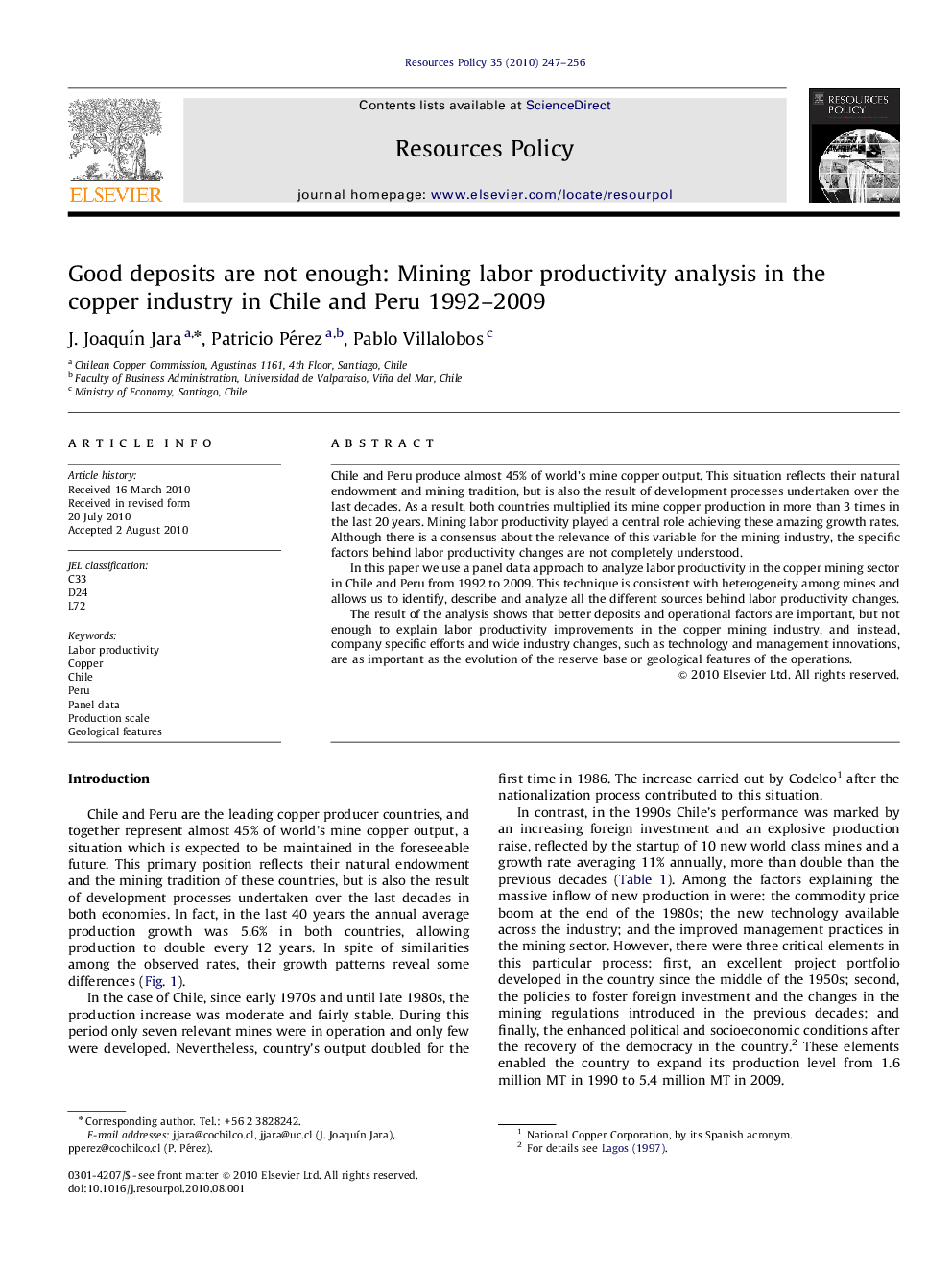| Article ID | Journal | Published Year | Pages | File Type |
|---|---|---|---|---|
| 985436 | Resources Policy | 2010 | 10 Pages |
Chile and Peru produce almost 45% of world’s mine copper output. This situation reflects their natural endowment and mining tradition, but is also the result of development processes undertaken over the last decades. As a result, both countries multiplied its mine copper production in more than 3 times in the last 20 years. Mining labor productivity played a central role achieving these amazing growth rates. Although there is a consensus about the relevance of this variable for the mining industry, the specific factors behind labor productivity changes are not completely understood.In this paper we use a panel data approach to analyze labor productivity in the copper mining sector in Chile and Peru from 1992 to 2009. This technique is consistent with heterogeneity among mines and allows us to identify, describe and analyze all the different sources behind labor productivity changes.The result of the analysis shows that better deposits and operational factors are important, but not enough to explain labor productivity improvements in the copper mining industry, and instead, company specific efforts and wide industry changes, such as technology and management innovations, are as important as the evolution of the reserve base or geological features of the operations.
